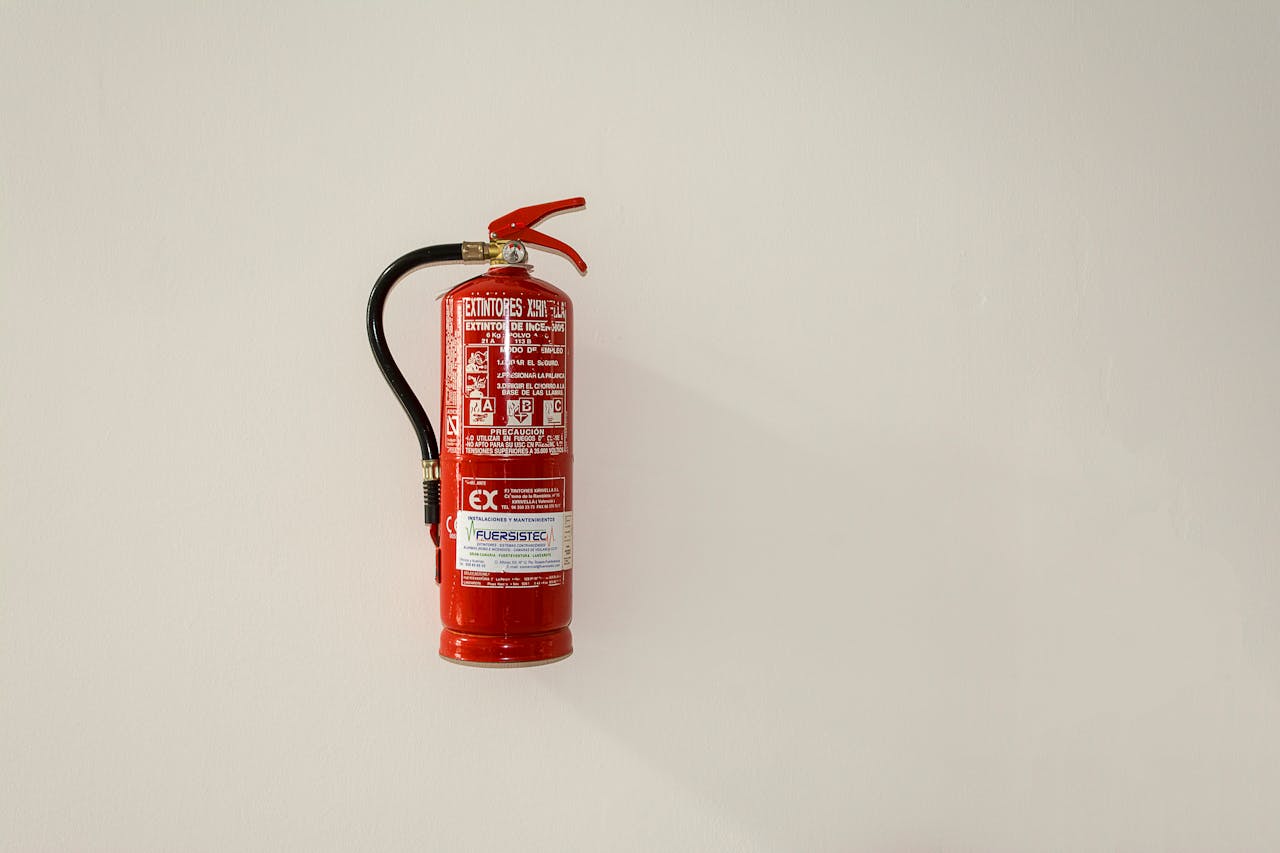Fire Extinguishers
Servicing fire extinguishers is a vital component of fire safety, ensuring that extinguishers are always ready to function effectively in case of a fire. The Irish Standard IS 291:2015+A1:2022 provides comprehensive guidelines for the maintenance, inspection, and recharging of fire extinguishers. One critical aspect of this standard is the requirement for the annual discharge testing of 33.3% of the fire extinguishers in service.
Regular Inspections of Fire Extinguishers
According to IS 291:2015+A1:2022, regular inspections of fire extinguishers are mandatory to check for any visible signs of damage, corrosion, or leakage. These inspections should be conducted monthly by trained personnel. During these inspections, key elements such as the pressure gauge (ensuring it is within the operational range), safety pin, and tamper seal must be checked for integrity. Additionally, the condition of the hose and nozzle should be assessed to confirm they are free from obstructions and damage.

Annual Maintenance of Fire Extinguishers
Annual maintenance, as specified by the standard, involves a thorough examination of both the internal and external components of the fire extinguisher. Certified technicians perform this maintenance, which includes dismantling the extinguisher, inspecting, and cleaning the internal parts such as the discharge valve, hose, and syphon tube. The extinguishing agent is checked for contamination or degradation and replaced if necessary. Pressure tests, or hydrostatic testing, are conducted on certain types of extinguishers to ensure the cylinder can withstand the required pressure.
33.3% Test Discharge Requirement
A significant requirement under IS 291:2015+A1:2022 is the 33.3% test discharge per annum. This stipulates that one-third of all fire extinguishers in a facility must be discharged and tested each year. This practice ensures that every extinguisher is operational and reliable, as it rotates through testing over a three-year cycle. During this test discharge, the extinguishers are fully activated to verify that they discharge correctly and effectively.
The process involves:
The extinguisher is discharged to ensure it functions correctly, covering factors like range, discharge time, and effectiveness.
After discharge, the extinguisher is recharged with the appropriate extinguishing agent and re-pressurised according to manufacturer specifications and safety standards.
The test also helps identify any wear and tear or potential issues in the extinguishers that might not be visible during regular inspections.
Recharging and Requalification
Post-discharge, the extinguishers need to be recharged and checked for readiness. The standard specifies procedures for recharging, which include refilling the extinguishing agent and replacing any expended components. Additionally, every five years, fire extinguishers undergo a requalification process involving hydrostatic testing to ensure the cylinder’s integrity.
Record Keeping
Maintaining accurate records is crucial for compliance with IS 291:2015+A1:2022. Each fire extinguisher must have a maintenance log detailing inspection dates, maintenance actions, and parts replaced.
This log helps track the service history and ensures compliance with regulatory requirements.
Compliance and Safety
Adherence to IS 291:2015+A1:2022 ensures fire extinguishers are maintained to the highest standards, guaranteeing their functionality in emergencies. Regular servicing, combined with the 33.3% annual discharge test, extends the life of fire extinguishers and ensures they are reliable, thus enhancing overall fire safety in residential, commercial, and industrial settings.
Ensure Your Safety with Expert Fire Extinguisher Servicing!
Keep your fire extinguishers in top condition for peace of mind and compliance.